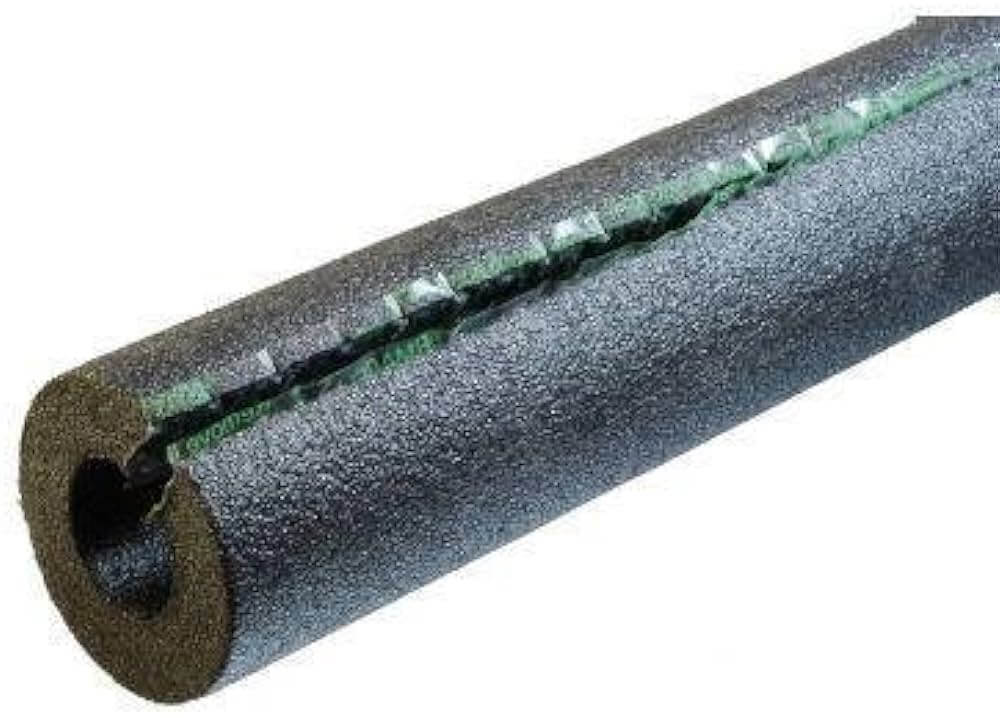How To Keep Above Ground Water Line From Freezing?
Keeping the above-ground water line from freezing is a crucial step to prevent property damage during winter. Otherwise, the frozen above-ground water line can cause cracks, cost expensive repair, and may result in an explosion. To avoid this devastation, it’s worth learning how to keep above ground water line from freezing.
According to the Iowa State University, you can protect the above-ground water from freezing by wrapping the pipe with insulation like polyethylene, or heat tape. Keep reading on to learn the appropriate process to insulate buried water pipes and ideas to thaw frozen water lines.
Contents
How to Keep Above Ground Water Line From Freezing
Polyethylene seems like black foam, and it’s commonly used to insulate outdoor pipes. Fiberglass sleeves are also a good alternative for insulating shallow water lines and protecting above-ground water lines from freezing.
These are also easy to cut with scissors based on the desired length. The procedure is:
1. Measure The Water Line’s Length
Start by measuring the length of the above-ground water line with a measuring tape. Note the measurement on paper with a pen along with the diameter of the water pipe.
2. Purchase The Polyethylene Insulation

Then, purchase slightly larger pipe insulation that needs to cover the measured length of the water line.
Make sure the insulation’s inner diameter matches the pipe’s outer diameter. Read the label on the packaging to check and buy the right-sized insulation.
3. Wrap Insulation Around The Water Line
Firstly, wear a pair of gloves to protect your hands from burning on the water line, as they can carry hot water. Find the vertical seam on the insulation and dig a finger into it. Then softly pull the insulation open.
Wrap the polythene inside around the water line and attach the insulation on either side of the water line.
4. Secure The Insulation
Use cable ties or duct tape to prevent the insulation from sliding off the water line. If you choose duct tape, wrap it around the insulation’s base multiple times and pull it to secure the insulation in place.
For cable ties, wrap it around the water line and thread tie one end through the other end’s opening.
Pull the tie firmly to secure it on the sliding length through the opening. Apply cable ties or duct tape once every 2 feet.
Alternatives to Keep Above Ground Water Line from Freezing
You can use several tools to ensure consistent water flow through your above-ground water line during extreme winter weather. Even if you are wondering how to keep a shallow water line from freezing, apply any of these handy options:
- Foam sleeves can be an effective solution to prevent freezing the water line that is above the ground.
- You can also use double-wrapped old sweatshirts or a thermal blanket.
- Heat cable or heat tape is also ideal for protecting above-ground water from freezing. But it needs to be spaced out by around an inch along the water pipe.
- If your above-ground water line has faucets with cut-off valves, keep them closed and drain the faucets properly. Plus, apply a faucet cover during the colder months to prevent freezing.
- Electric heating tape is preferable for the water line that is resistant to the elements. Simply wrap the tape around the water line and switch it on to keep the pipe warm.
How To Thaw Above Ground Frozen Water Line?
The water line may freeze despite the best efforts. So if it happens, open the faucet and release the built-up pressure in the water line. This also helps you to identify the faulty spot. While taking note of the frozen spot, check for line breaks.
And then follow these ideas to thaw your exposed water line:
- Turn on the faucet for the defective water line, so the flowing water can melt the ice faster. If the water can’t flow, it means the water line is blocked completely. Turn off the faucet and heat it directly.
- Take a heating pad and turn it to its maximum setting. Then hold the heating pad around the frozen part. After heating the water line for around 15 minutes, turn the faucet on once again to check if the water is flowing. If the water still doesn’t flow, keep heating the water line for another 10 minutes or until it is thawed fully.
- But don’t use a gas heater or blowtorch to thaw the frozen water line. Otherwise, your water pipe can melt or cause an explosion due to excessive heat.
- If you can’t clean the clogged water line, hire a licensed plumber.
FAQs
How to keep outside PVC pipes from freezing?
You can insulate the outdoor PVC pipe and water line to protect them from freezing. The slit of pipe insulation helps it slide over the PVC pipe easily, while the bib cover ensures effective protection during the winter months.
Can dripping hot water protect the water pipe from freezing?
Dripping warm water overnight is a helpful solution to protect the pipe from freezing. However, you must supply one gallon of warm water per hour to keep the pipe from freezing.
What is the best type of pipe to use for above-ground water lines?
High-density polyethylene pipes are the best pipe insulation to prevent freezing of the outside buried water lines. Because these pipes are tasteless, non-toxic, and eco-friendly. HDPE pipes are also resistant to corrosion and cracking.
Final Words
Having learned how to keep above ground water lines from freezing, concentrate on collecting the best essentials. Purchase the pipe insulation and other tools and apply them following the method we have described.
Hope you won’t notice the tiniest frozen spot on your above-ground water line even at a lower temperature. If the idea fails somehow, you already know how to thaw a frozen water pipe.
As an Amazon Associate, I earn from qualifying purchases.



![How To Cover A Pool Pump [7 Pool Pump Cover Ideas]](https://pumpingpies.com/wp-content/uploads/2022/08/How-To-Cover-A-Pool-Pump-7-Pool-Pump-Cover-Ideas-768x432.png)


